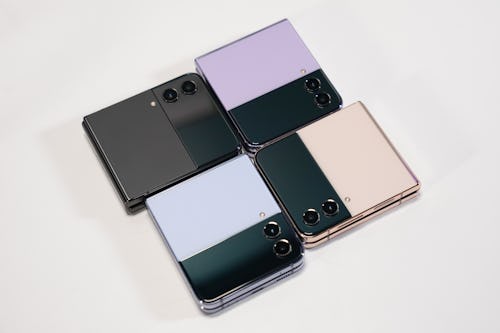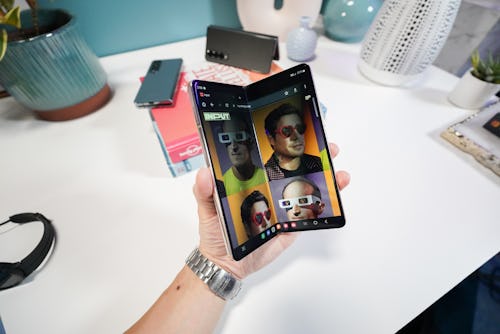
If you care at all about consumer electronics, you’re probably aware of a couple of brand spanking new devices right now; Samsung’s tandem of next-gen smartphones, the Galaxy Z Flip 4 and Galaxy Z Fold 4.
Likewise, as an acolyte of all the latest and greatest consumer electronics, you’re probably also aware that both of these devices are foldables, which is to say they have screens that bend right in half. Yawn, right? But that’s just the point.
I sit here, four generations into Samsung’s journey toward carving out a new phone form factor, wrote the word “foldable” onto a website, and you knew exactly what I meant. If you’re looking for proof of Samsung’s success, congrats, you just got it.
I write this not just because I like the proverbial sound of my own voice (I mean, I do, but that’s neither here nor there at the moment) but because foldables (Samsung’s in particular) deserve — nay earned — our respect.
Flip, not flop

I’ve used an iPhone for as long as I’ve had a phone that can readily access the internet, and in that epic eon of consumer electronics I’ve seen some vast advancements. We’re on the fifth-generation of cellular networking; filmmakers are shooting honest-to-god movies on iPhones now; butt-dialing is almost an anachronism! But with those gargantuan leaps in computing power, functionality, and connectivity, the look and feel of the smartphone has languished, sticking mostly to the now normative glass slab.
And damn it, do I love a glass slab. It just works! It’s hard to argue with a portable screen that does anything and everything I could possibly need it do. But this is 2022 and I’m a tech journalist — is that all that design should be? A means to an end?
Samsung’s foldables tell me otherwise. While it’s not entirely shocking that a company of Samsung’s size and breadth was able to go out there and essentially create a market for a category of device that didn’t exist prior, the success of the Z Flip 3 and Z Fold 4 still say a lot about what people really want in a phone.
When I see the Z Flip 4, what I really see is the promise of future design.
Maybe they want something smaller with the flexibility to become larger; maybe they want their tech to make a statement; maybe they really, really like the click of snapping something shut. Whatever the appeal is to each consumer, the fact remains: there is room to continue tinkering with smartphone design and even profit to be made from doing it right.
Samsung’s big bet on foldables is making it a bunch of money, which is all well and good for Samsung. But I don’t care much about that. When I see the Z Flip 4, what I really see is the promise of future design, and incentive for even the most ingrained tech giants to think outside the box. Maybe the glass slab isn’t the apex of smartphone design after all. Maybe different can be better.
So, what’s next?

The road to functional foldable hasn’t been easy, and it’s still far from perfect. Folding phones (Samsung’s infamously included) have had their tribulations; felled by tiny particles of dust and foiled by less-than-ideal screen design.
As you might imagine, Samsung is attempting to improve on those hardware foibles. Both the Z Flip 4 and Z Fold 4, for example, come with a new, smaller hinge. The word is still out on whether the new design makes any discernible difference on the phones’ noticeable crease (that unsightly seam in the middle of the display), but whether it does or not is somewhat beside the point for me.
Foldable phones aren’t more practical than their flat counterparts, and they probably never will be. I dream of a day where the transition from fold to flat is completely seamless, but that day may never come. And That’s okay! In my eyes, the Flip and the Fold have already done more important work than providing a suitable conduit for texts, calls, and doom-scrolling through Twitter.
They proved that setting out on a mission to not be boring can be good — both for business and for the terminally future-forward people who are tired of tapping away on the same, old glass rectangle.







